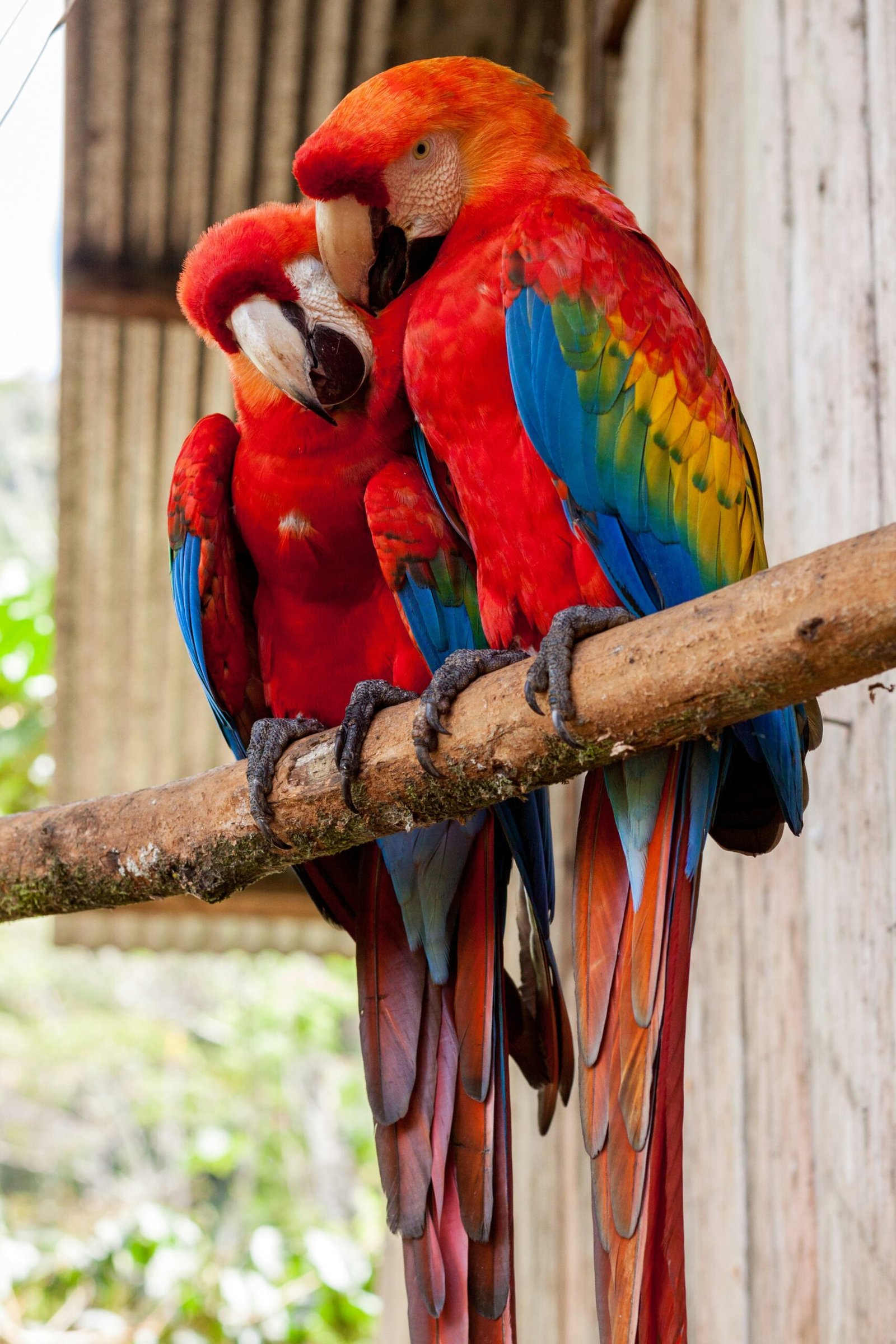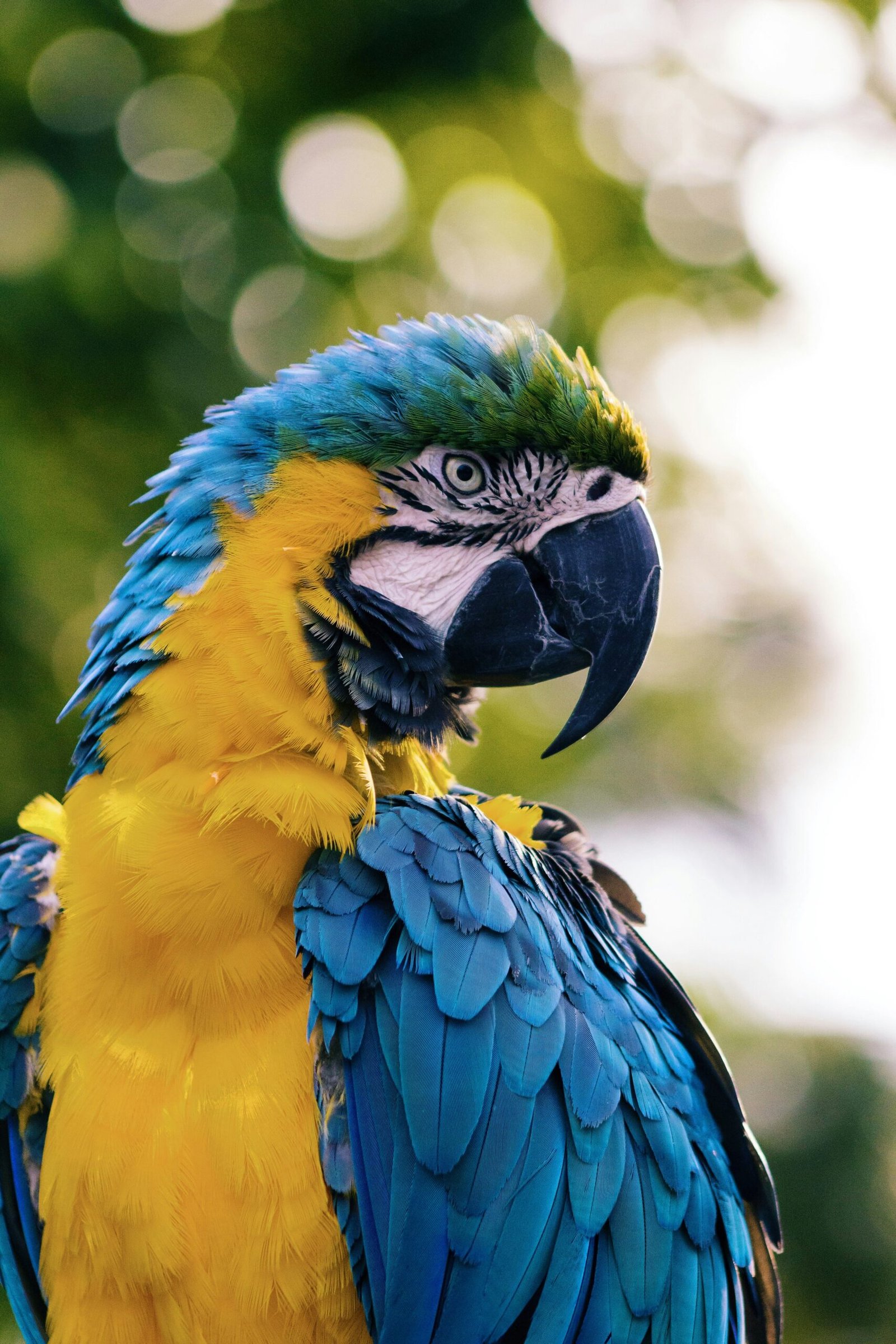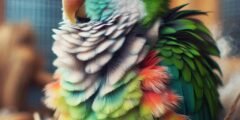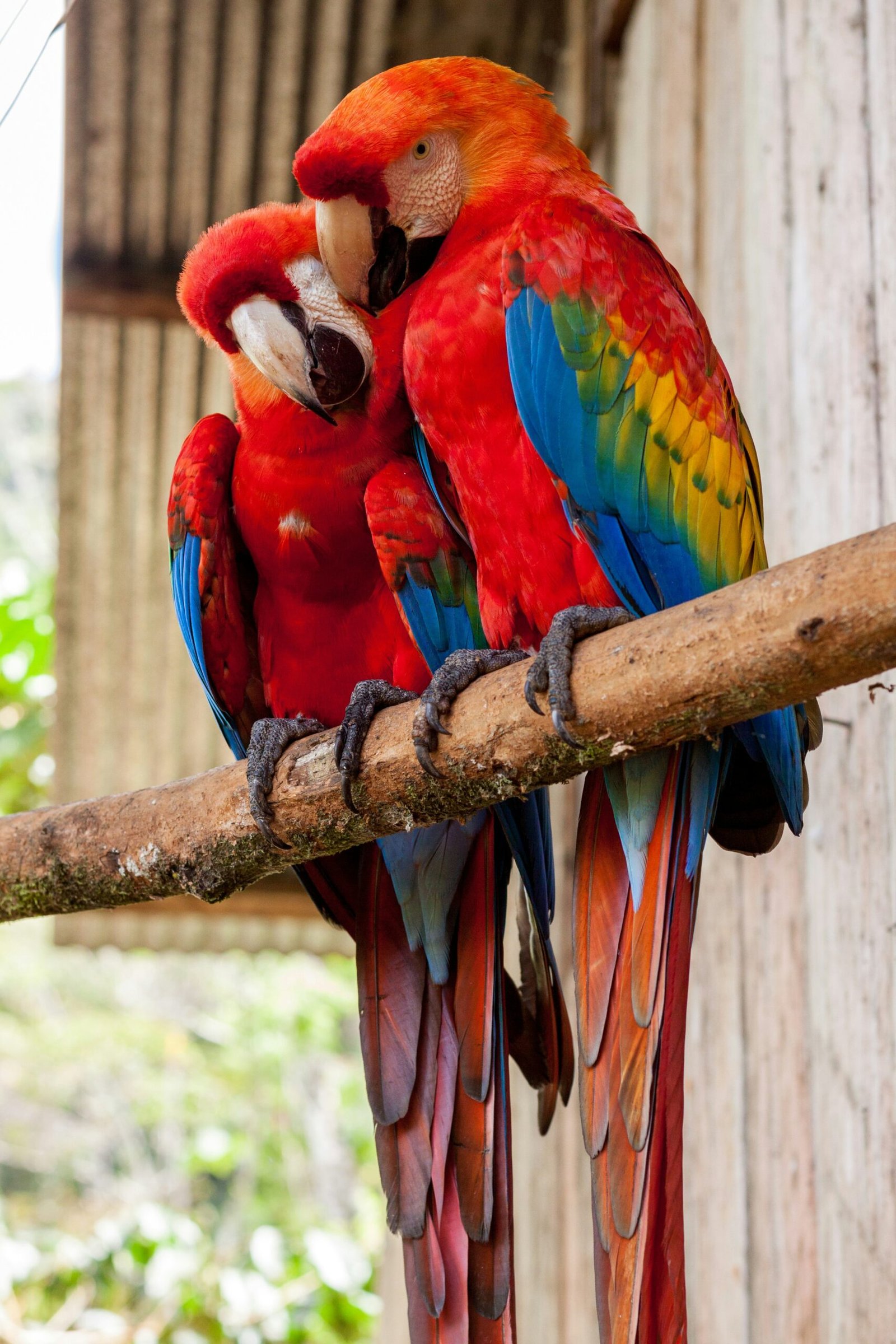Quaker parrots, also known as Monk parakeets, are celebrated for their intelligence and playful personalities. These vibrant, social birds can make delightful companions and are often cherished for their ability to mimic human speech and perform tricks. However, like any pet, they can sometimes exhibit behaviors that are challenging for their owners. One such behavior is biting, which can be both frustrating and painful. Understanding the reasons behind this habit is crucial for implementing effective strategies to stop it.
This blog post aims to provide a comprehensive guide to help you address and stop your Quaker parrot from biting. By delving into the underlying causes and offering practical techniques, we hope to equip you with the knowledge needed to foster a harmonious relationship with your feathered friend. Whether you are a new parrot owner or have had your Quaker for years, the information presented here will be valuable in curbing this unwanted behavior.
It’s important to note that biting is a common issue among Quaker parrots and does not necessarily indicate a serious problem. Often, biting can be a form of communication, a reaction to fear, or a result of improper socialization. By learning to identify the triggers and responding appropriately, you can create a more positive environment for your parrot, thereby reducing the incidence of biting. This blog post will explore various aspects of this behavior and provide actionable advice to help you stop your Quaker parrot from biting, ensuring a more enjoyable companionship for both you and your pet.
Understanding Why Quakers Bite
To effectively address the issue of biting in Quaker parrots, it is crucial to comprehend the underlying reasons behind this behavior. One primary cause is fear or anxiety. Quaker parrots may bite when they feel threatened or scared, often reacting to unfamiliar environments, sudden movements, or loud noises. Signs indicating fear include fluffed feathers, rapid eye movements, and a defensive posture. Creating a calm and predictable environment can help alleviate this anxiety and reduce biting incidents.
Overstimulation is another common trigger for biting. Quaker parrots are highly intelligent and social creatures, and they may become overwhelmed by excessive handling or interaction. When overstimulated, they may resort to biting as a way to communicate their discomfort. Look for signs such as dilated pupils, quick movements, or agitated behavior. Providing your parrot with sufficient mental and physical stimulation through toys and activities, while also respecting their need for downtime, can help manage this issue.
Attention-seeking behavior is also a frequent cause of biting. Quaker parrots are known for their strong bonds with their owners and may bite to draw attention to themselves. If your parrot learns that biting results in a reaction, they may continue this behavior to garner attention. Identifying this pattern and responding with calm, consistent redirection rather than immediate attention can discourage this behavior over time.
Lastly, hormonal changes can influence biting behavior in Quaker parrots. During breeding seasons, Quaker parrots may become more territorial and aggressive, leading to an increase in biting. Recognizing the signs of hormonal changes, such as nesting behaviors and increased vocalization, can help you anticipate and mitigate these periods of heightened aggression. Providing appropriate outlets for their natural behaviors and maintaining a stable routine can ease the impact of hormonal fluctuations.
By understanding these underlying causes—fear or anxiety, overstimulation, attention-seeking, and hormonal changes—you can better interpret your Quaker parrot’s behavior and implement targeted strategies to stop your Quaker parrot from biting.
Fear or Anxiety
Sudden movements, loud noises, or unfamiliar situations can often incite fear or anxiety in Quaker parrots, leading to defensive biting reactions. Recognizing the signs of fear or anxiety in your parrot is crucial for addressing the root causes and creating a more harmonious environment. Common indications of fear in Quaker parrots include rapid breathing, fluffed feathers, and a general reluctance to leave their cage or perch. Additionally, excessive vocalization or sudden silence can also be signs that your bird is feeling anxious.
To minimize these triggers, it is essential to create a safe and calm environment for your parrot. Start by placing the cage in a quiet area of your home where the bird can observe the household activities without being overwhelmed. Avoid placing the cage near windows or high-traffic areas where sudden movements or loud noises are more likely to occur. Consistent routines can also help your parrot feel more secure; feed and interact with your bird at the same times each day to establish a predictable schedule.
Gradual exposure to new situations can also reduce anxiety. Introduce new objects or people slowly, allowing your parrot to acclimate at their own pace. Positive reinforcement, such as treats and praise, can help your bird associate new experiences with positive outcomes. Similarly, providing a variety of toys and enrichment activities can keep your Quaker parrot mentally stimulated and less prone to anxiety-driven behaviors.
Ensuring that your Quaker parrot feels secure is foundational in stopping biting behavior. A calm and reassuring environment can significantly diminish fear-induced biting, making it easier to manage your parrot’s behavior. By addressing the underlying causes of fear and anxiety, you create a nurturing atmosphere where your bird can thrive without resorting to biting as a defensive mechanism.
Overstimulation
Quaker parrots, like many other birds, can become agitated when they are overstimulated. Excessive petting, wrestling, or prolonged playtime can lead to discomfort, often resulting in nipping as a means of communication. Recognizing the signs of overstimulation is crucial in preventing your Quaker parrot from biting.
One of the first signs of overstimulation is a change in behavior. Your parrot may start to fidget, flap its wings, or vocalize more than usual. These are indicators that your bird is becoming overwhelmed. Additionally, watch for more subtle signs such as dilated pupils or a ruffled appearance, which can also signal distress.
To stop your Quaker parrot from biting due to overstimulation, it’s essential to engage with them in a balanced manner. Short, frequent interactions are more effective than long, continuous play sessions. Aim for multiple 10-15 minute interactions spread throughout the day rather than one prolonged playtime. This approach helps ensure your parrot receives the attention it needs without becoming overwhelmed.
Variety in interaction is also important. Mix up activities to keep your parrot engaged without causing overstimulation. For instance, you can alternate between gentle petting, talking to your bird, offering toys, and allowing some alone time. This balanced engagement helps maintain their mental and physical well-being.
Additionally, establishing a routine can be beneficial. Parrots thrive on predictability, and having a set schedule for interaction can minimize stress. Understanding and respecting your Quaker parrot’s boundaries is vital. If you notice signs of overstimulation, give your bird some space to calm down before resuming interaction.
By recognizing the signs of overstimulation and adjusting your interaction strategies accordingly, you can effectively stop your Quaker parrot from biting and create a harmonious relationship built on mutual respect and understanding.
Attention Seeking
Understanding your Quaker parrot’s behavior is crucial for addressing biting incidents effectively. Sometimes, a gentle bite is merely your parrot’s way of seeking attention. Differentiating between attention-seeking bites and other types of biting is the first step in managing and modifying this behavior.
Attention-seeking bites are typically softer and may occur when your parrot feels neglected or is trying to communicate a desire for interaction. These bites can often be distinguished by the context in which they happen. For instance, your Quaker parrot might bite gently when you are engaged in another activity or not paying attention to them. Unlike aggressive or fearful biting, these bites are less intense and more consistent with your parrot’s attempts to draw your focus.
To effectively respond to attention-seeking bites without reinforcing the habit, it’s important to practice positive reinforcement techniques. When your parrot exhibits non-biting behaviors to gain your attention, such as vocalizing or lowering its head for a scratch, reward them with praise, treats, or interaction. This approach encourages your bird to use these more acceptable behaviors rather than resorting to biting.
Another technique involves ignoring the bite. If your Quaker parrot bites to get your attention and you immediately respond, even if it is a negative response, you inadvertently reinforce the behavior. Instead, calmly and gently move away from the parrot, withholding any reaction that could be perceived as attention. Once the biting ceases, you can then engage positively with your parrot, thus teaching them that biting does not lead to the desired outcome.
Consistency is key in addressing attention-seeking bites. Ensure all family members and regular visitors understand and adhere to the same response strategies. Over time, your Quaker parrot will learn that biting is not an effective method for gaining attention, and with patience and persistence, this behavior can be significantly reduced or eliminated.
Hormonal Changes
Hormonal changes play a significant role in the behavior of Quaker parrots, particularly during breeding season or molting. During these times, your parrot might exhibit increased territoriality, which can lead to a higher incidence of biting. Understanding the impact of these hormonal fluctuations is crucial in managing your bird’s behavior effectively.
During the breeding season, Quaker parrots experience a surge in hormones that can make them more protective of their space and more likely to bite. This territorial behavior is a natural instinct aimed at safeguarding their nest and potential offspring. Similarly, molting—a period when parrots shed and regrow feathers—can be physically taxing and uncomfortable for your bird, potentially leading to irritability and biting.
To mitigate biting behavior during these periods, it’s essential to create a stable and stress-free environment for your parrot. Ensure that their cage is in a quiet, secure location away from excessive human traffic and other pets. Keep a consistent routine in terms of feeding, cleaning, and interaction to provide a sense of security. Additionally, consider offering extra enrichment activities, such as foraging toys or puzzle feeders, to keep their mind occupied and reduce stress.
During these hormonal phases, it’s also wise to limit handling if your parrot shows signs of aggression. Pay close attention to their body language; if they seem agitated or are displaying signs of aggression, such as fluffed feathers or dilated pupils, give them space. Gradually reintroducing interaction can help in rebuilding trust and reducing the likelihood of biting.
By understanding the hormonal changes that influence your Quaker parrot’s behavior and taking proactive steps to manage their environment and interactions, you can significantly reduce the chances of biting. This approach not only helps in maintaining a harmonious relationship with your pet but also ensures their well-being during these sensitive periods.
Techniques to Stop Biting
Implementing positive reinforcement techniques can be highly effective in curbing the biting behavior of your Quaker parrot. One of the most successful strategies involves rewarding gentle interactions. Whenever your Quaker engages with you in a non-aggressive manner, offer positive reinforcement in the form of treats, verbal praise, or affectionate head scratches. This method helps your bird associate gentle behavior with positive outcomes, thereby encouraging it to repeat such behavior.
Another practical technique is to teach your Quaker parrot to step up onto a stick instead of your finger. This reduces the risk of bites during interactions and provides a safer alternative for both you and your bird. Start by introducing the stick gradually, allowing your parrot to become comfortable with it. Once your bird is familiar with the stick, use gentle commands and treats to encourage it to step onto the stick. Consistency and patience are key during this training phase.
Understanding and observing your Quaker parrot’s body language is crucial in preventing bites. Pay close attention to signs of agitation, such as fluffed feathers, rapid head movements, or a lowered head. Recognizing these cues early allows you to intervene before the biting occurs. By respecting your bird’s boundaries and giving it space when needed, you can minimize instances of aggressive behavior.
Providing a variety of stimulating toys is essential for keeping your Quaker parrot mentally and physically engaged. Boredom often leads to undesirable behaviors, including biting. Ensure your bird has access to a range of toys that cater to its natural instincts, such as foraging, climbing, and chewing. Regularly rotating toys can also prevent monotony and keep your parrot entertained.
Employing these techniques in a consistent and patient manner can effectively reduce biting in your Quaker parrot. By focusing on positive reinforcement, understanding body language, and providing ample stimulation, you create a nurturing environment that fosters gentle interactions and minimizes aggressive behavior.
Conclusion
By understanding the reasons behind your Quaker parrot’s biting and implementing positive reinforcement techniques, you can build a trusting bond and create a harmonious relationship with your feathered companion. Addressing the root causes of the biting behavior, such as fear, territoriality, or lack of socialization, is essential in devising an effective strategy to stop your Quaker parrot from biting.
Consistency and patience are crucial in this journey. Positive reinforcement, such as rewarding your parrot with treats, praise, or affection when it displays desirable behavior, can significantly reduce instances of biting. Avoid punitive measures as they can exacerbate fear and mistrust, leading to more aggressive behaviors.
Additionally, ensure that your Quaker parrot has a stimulating environment with plenty of toys and opportunities for mental and physical exercise. A well-engaged parrot is less likely to resort to biting out of boredom or frustration. Regular interaction and socialization can also help in mitigating biting tendencies.
Empathy plays a significant role in understanding and addressing the biting behavior. Approach the issue with a calm and composed demeanor, and be attentive to your parrot’s body language and cues. This will enable you to preemptively address situations that might trigger biting.
In conclusion, stopping your Quaker parrot from biting requires a multifaceted approach that combines understanding, positive reinforcement, and a nurturing environment. By dedicating time and effort to this process, you can foster a strong, trusting bond with your parrot, ensuring a peaceful coexistence.







